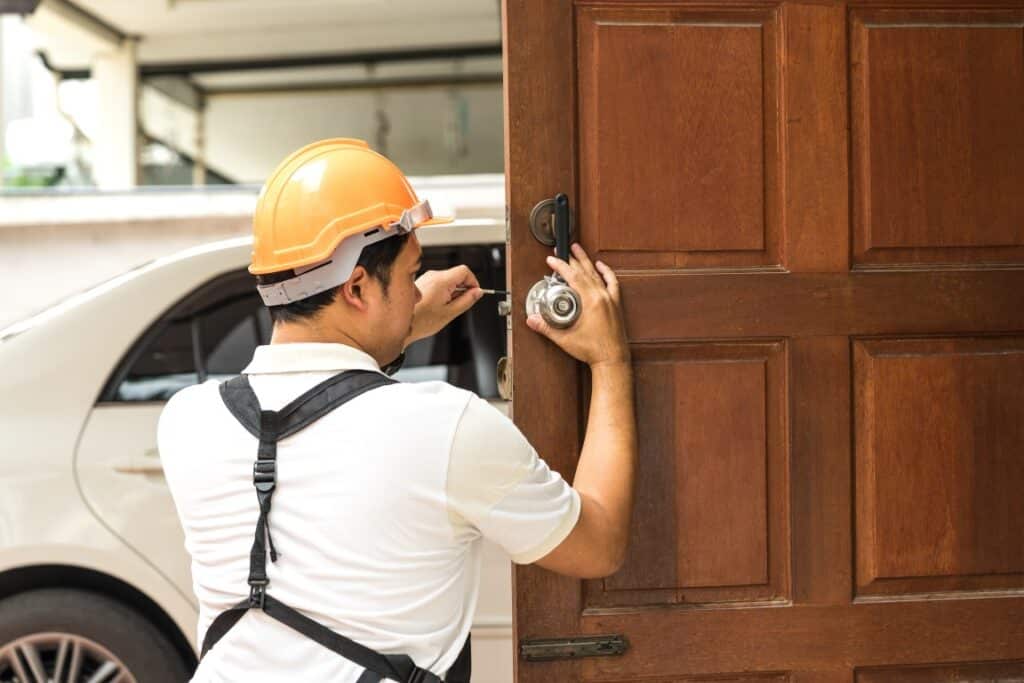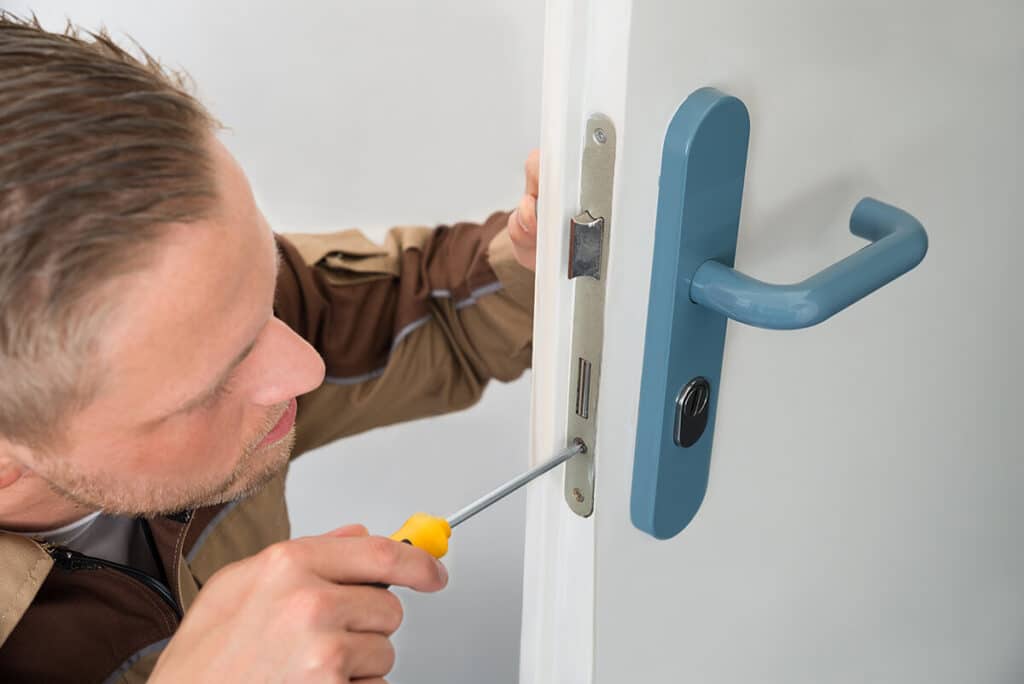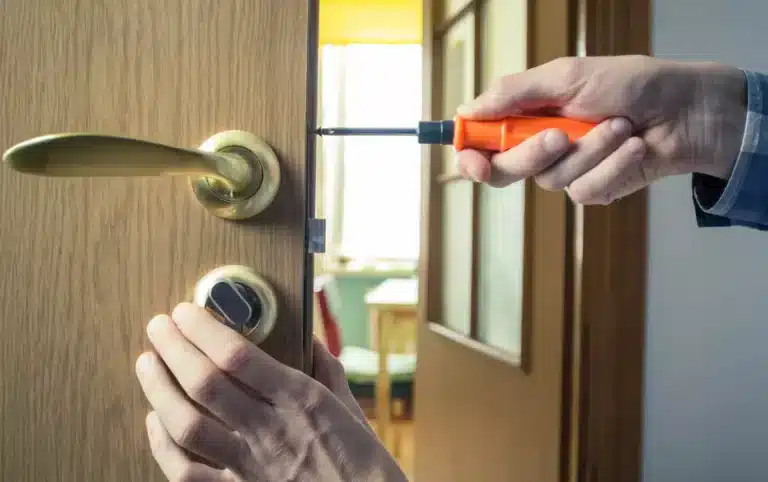Introduction
Security screen doors are a popular to homes, providing an extra layer of protection against intruders while allowing fresh air to flow in. However, there may come a time when you need to remove a security screen door, whether it’s for maintenance, replacement, or simply to facilitate moving large objects in and out of your home. While the process may seem daunting at first, with the right tools and a step-by-step approach, you can successfully remove a security screen door with ease.
Our step-by-step instructions will take you through the necessary stages, including removing the screws or fasteners that secure door to the frame, disconnecting the door from the hinges, and carefully lifting the door out of the frame. Helpful tips and tricks to troubleshoot common challenges that may arise during the removal process.
You can confidently remove your security screen door, allowing you to address any maintenance or replacement needs or simply enjoy the open space without the door in place. So, let’s get started and learn how to remove a security screen door effectively and safely.

Can you replace your own screen door?
Replacing an old one is easier than you might think. Manufacturers have made installation more DIY-friendly by providing standard sizes that’ll fit almost any door opening and simpler installation kits. Still, you’ll find some sticking points.
Yes, you can absolutely replace your own screen door with a little bit of DIY know-how and some basic tools. Replacing a screen door can be a cost-effective and rewarding project that allows you to customize your home’s entrance while improving functionality and aesthetics.
To replace your screen door, you will need a few essential tools such as a screwdriver, tape measure, utility knife, and a replacement screen door kit. To ensure that you have the correct measurements for the new door before purchasing the replacement. Most screen door kits come with comprehensive instructions, making the process easier to follow.
Start by removing the old screen door by unscrewing it from the door frame. Once the old door is removed, carefully measure and cut the new screen material to fit the frame. Attach the screen material to the frame using the provided hardware or staples, ensuring it is taut and free of wrinkles.
Next, install the door handle, hinges, and latch mechanism according to the manufacturer’s instructions. Take your time during this step to ensure proper alignment and functionality. Once all the components are securely attached, carefully place the new screen door into the door frame and test its operation.
What is the front screen door called?
Storm doors
Storm doors refer to the glass door installed over your existing exterior door. They can add protection from the elements and increase home security, as well as let more natural light into your home. Storm doors that feature screens instead of glass are referred to as screen doors. They are made to ventilate your home.
The front screen door is called a “storm door.” Storm doors go in front of outside doors, usually a home’s main entry. It lets ventilation and natural light in while protecting the house from rain, wind, and debris.
A full-length glass panel or screen may be adjusted for weather on aluminum, steel, or wood storm doors. In hot weather, a screen may replace the glass panel to allow ventilation; in cold weather, it can insulate and prevent drafts.
Storm doors provide security and intruder protection in to weather protection. They include robust locks and reinforced frames to provide home security.
What is the difference between a screen door and a security door?
Typical screen doors are the more flimsy type that offer little to no protection and mainly exist for air flow. Security screen doors, on the other hand, are built to withstand brute force and come with locking systems which make it difficult for burglars to make their way into your house.
Screen doors and security doors vary primarily in function and protection.
Screen doors provide fresh air and natural light into a house while keeping insects and trash out. A frame with a mesh screen provides ventilation and view. Screen doors are popular in moderate climates with little security. They may be tailored to complement the home’s decor and made of metal, vinyl, or wood.
Security doors, on the other hand, are meant to deter burglars and boost house security. Security doors are usually built of steel or wrought iron for strength and durability. They discourage break-ins with strengthened frames, hinges, and locking mechanisms. Security doors include thicker, opaque panels with few or no mesh screens, restricting outside view.
Is it good to have a screen door?
The No. 1 reason to add a screen door to your home is to allow more light and air into your home. With screen doors on your entryways, you can open up your home on beautiful days to let in fresh air and more light, without letting in bugs or other pests.
Having a screen door can offer several benefits, making it a worthwhile to your home. Here are some reasons why having a screen door can be beneficial:
Natural Ventilation: Screen doors allow fresh air to circulate throughout your home, creating a pleasant indoor environment. They provide a barrier against insects while still allowing the breeze to flow in, reducing the need for air conditioning and promoting energy efficiency.
Protection against Insects: Screen doors serve as a protective barrier, preventing insects and pests from entering your home. This is particularly beneficial during warmer months when bugs are more active. It allows you to enjoy the outdoors without the annoyance of flying pests.
Increased Natural Light: Screen doors often feature a mesh screen that allows sunlight to filter through, brightening your space and reducing the need for artificial lighting. This can create a more open and inviting atmosphere in your home.
Enhanced Security: While screen doors are not as secure as security doors, they can still provide an additional layer of security. They act as a deterrent to potential intruders, making it more difficult for them to access your home. Additionally, screen doors can be equipped with locks to further enhance security.
Does a screen door stop rain?
A standard screen door has no frame, so it doesn’t protect against rain or snow while still allowing fresh air into your home. Storm doors are made with frames that provide an additional layer of protection from the elements.
Rainproof screen doors are not developed. They’re mostly for airflow and pest control. Screen door mesh screens are usually composed of fiberglass or aluminum to facilitate airflow and block insects.
Screen doors may provide some shelter from mild rain or drizzle. Water entering the home may be filtered by the mesh screen. It may block wind-blown debris and bigger water droplets from entering.
Screen doors aren’t watertight, so water may enter your house during strong rain or storms. If your neighborhood gets severe rain, consider adding storm doors or combo doors for improved rain protection.
Storm doors usually contain glass panes that may replace the mesh screen in bad weather. This seals your property from rainfall while letting light through.
Why would I want to remove a security screen door?
There can be several reasons why you might want to remove a security screen door. Here are a few common scenarios:
Maintenance or Repair: Over time, security screen doors may require maintenance or repair. Components such as hinges, locks, or screens may become damaged or worn out, impacting the door’s functionality. Removing the door allows you to address these issues, replace or repair the necessary parts, and restore the door’s performance.
Replacement: You might want to remove a security screen door to replace it with a new one. This could be due to wanting an upgraded design, improved security features, or simply a change in style. Removing the existing door allows you to install a new one that better suits your preferences and requirements.
Moving Large Objects: Security screen doors can sometimes obstruct the movement of large furniture or appliances into or out of your home. In such cases, removing the door temporarily provides more space and facilitates easier transportation of bulky items.
Seasonal Use: Depending on the climate and your preferences, you may choose to remove a security screen door during certain seasons. For example, you might remove it during the warmer months to maximize ventilation and enjoy an unobstructed view. Conversely, you may remove it during colder months to improve insulation and minimize drafts.
What tools do I need to remove a security screen door?
To remove a security screen door, you will need a few essential tools to ensure a smooth and efficient process. Here are the tools commonly required:
Screwdriver: A screwdriver is essential for removing screws that secure the door to the frame. Depending on the type of screws used, you may need a Phillips head or flathead screwdriver.
Pliers: Pliers are useful for gripping and removing any fasteners, such as nails or clips, that may be securing the door in place.
Drill (optional): In some cases, there may be screws or fasteners that are difficult to remove manually. A drill with appropriate drill bits can help make the process easier and quicker.
Putty Knife or Utility Knife: A putty knife or utility knife can be handy for removing any caulk or adhesive around the door frame that may be securing the door in place.
pull Bar or Crowbar: Gently pull the door away from the frame using a pry bar or crowbar if it is tight or has difficult nails or fasteners.
Safety Equipment: It’s always to prioritize safety. Depending on the situation, you may want to wear gloves, safety glasses, and closed-toe shoes to protect yourself during the removal process.
Are there any safety precautions to consider when removing a security screen door?
Yes, there are several safety precautions to consider when removing a security screen door to ensure the process is carried out safely. Here are some important safety guidelines to keep in mind:
Use Protective Gear: Wear appropriate safety gear such as gloves, safety glasses, and closed-toe shoes to protect yourself from potential injuries. This will help safeguard against sharp edges, debris, or any unforeseen accidents during the removal process.
Disconnect Power Sources: If your security screen door has electrical components, such as a built-in alarm or lighting, ensure that you disconnect the power source before attempting to remove the door. This will prevent the risk of electrical shock.
Security: Before removing the door, support it to prevent it from falling or injuring. Ask a helper to hold or support the door.
Work in a Well-lit Area: Ensure the area where you are removing the door is well-lit to avoid any tripping hazards or accidental mishaps. Adequate lighting will help you see and navigate the work area more effectively.
Be Cautious of Sharp Edges: Security screen doors may have sharp edges, especially around the metal frame or hinges. Take care to avoid any cuts or scrapes by handling the door with caution and using gloves when necessary.
Follow Manufacturer’s Instructions: Always refer to the manufacturer’s instructions specific to your security screen door model. They may provide removal safety tips.

Conclusion
Removing a security screen door may seem like a daunting task, but with the right tools and a systematic approach, it can be a straightforward process. By following the instructions outlined, you can ensure a smooth removal process. We discussed the essential tools you’ll need, such as a screwdriver, pliers, and possibly a helper. Additionally, we emphasized the importance of prioritizing safety throughout the procedure.
Including removing screws or fasteners, disconnecting the door from the hinges, and carefully lifting the door out of the frame. By following these steps in order, you can avoid potential complications and complete the removal efficiently.
We offered helpful tips and troubleshooting advice to address any challenges that may arise during the removal process. With these additional insights, you can navigate unexpected situations and achieve a successful outcome.
Removing a security screen door may be necessary for maintenance, replacement, or convenience. By acquiring the and skills outlined, you can confidently remove the door whenever needed, allowing you to address any necessary repairs or enjoy increased accessibility.

